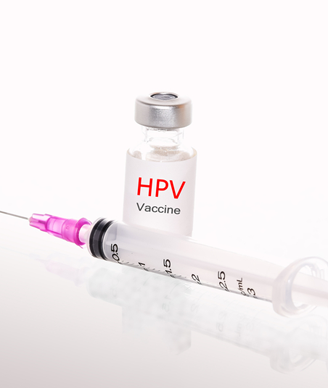HPV Vaccine Can Protect Previously Exposed Patients
The HPV 16/18 vaccine protects women from cervical, anal, and oral HPV infections that can lead to cancer, including some women previously exposed to HPV.
Image © Jes2u.photo / Shutterstock.com

Vaccinating women between the ages of 18 and 25 against the human papillomavirus (HPV) resulted in protection at the three known sites of viral entry. The HPV 16/18 vaccine protected women from cervical, anal, and oral HPV infections that can lead to cancer. Women who were previously exposed to HPV were also partly protected from new HPV infections.
In the study, women vaccinated with the HPV 16/18 vaccine were significantly less likely to be infected at two or more anatomic sites (7%) compared with women who received a control vaccine (30%) (P < .01).
These results were presented at a press briefing at the American Association for Cancer Research (AACR) Annual Meeting, held April 18 to 22 in Philadelphia, by study author Daniel C. Beachler, PhD, a postdoctoral fellow in the infections and immunoepidemiology branch of the National Cancer Institute.
According to Beachler and his coauthors, this study is the first to show a multi-site vaccine efficacy. “Individuals can acquire HPV infections in the epithelium of their cervical, anal, and oral sites, and occasionally these infections lead to cancer,” Beachler told Cancer Network.
“The HPV vaccines are highly effective at preventing HPV. In the US, persistent infection with HPV is known to cause about 25,000 new cases of cancer each year at the cervical, anal, and oropharyngeal sites,” said Beachler. “Worldwide cervical cancer is one of the leading causes of cancer death in women. These vaccines have the potential to greatly reduce this cancer burden in the future.”
The researchers analyzed 4,186 women who took part in the randomized, controlled Costa Rica Vaccine Trial. The participants were assigned to vaccination with Cervarix, the HPV 16/18 vaccine, or a control vaccine, and had cervical samples taken annually post-vaccination and oral and anal samples taken every 4 years.
Beachler and colleagues assessed how well vaccination protected against infection at all three viral entry sites. Efficacy was 83% among women with no prior history of HPV exposure or infection and 58% among women who had a history of HPV exposure before vaccination. Efficacy was not significant (25%) among women who had an active cervical HPV 16/18 infection at vaccination.
Overall, the multi-site vaccine efficacy was 65% and increased to 91% for protection of at least two of the three viral sites of entry.
While the vaccine is not a therapy for ongoing HPV infection, the study shows that in women who have had an HPV infection, the vaccine can prevent subsequent infections at other sites of viral entry.
HPV vaccination is currently recommended in the United States for girls and boys aged 11 to 12 years and through the age of 26. Women up to the age of 26 and men up to the age of 21 should also be vaccinated if they had not received the full three-dose vaccine as preteens. Still, only about 50% of women younger than age 18 are receiving the HPV vaccine in the United States.
“This research supports current US guidelines for HPV vaccination from the Centers for Disease Control,” said Beachler. “This study provides further evidence that most females vaccinated between the ages of 18 to 25 can receive protection at one or more anatomic sites from the HPV vaccine. This is important given that only about half of US females under 18 have been HPV vaccinated.”
If these study results are confirmed, then women who have been previously exposed to either HPV 16 or 18 should consider receiving the HPV vaccination, according to the study authors.
Newsletter
Stay up to date on recent advances in the multidisciplinary approach to cancer.